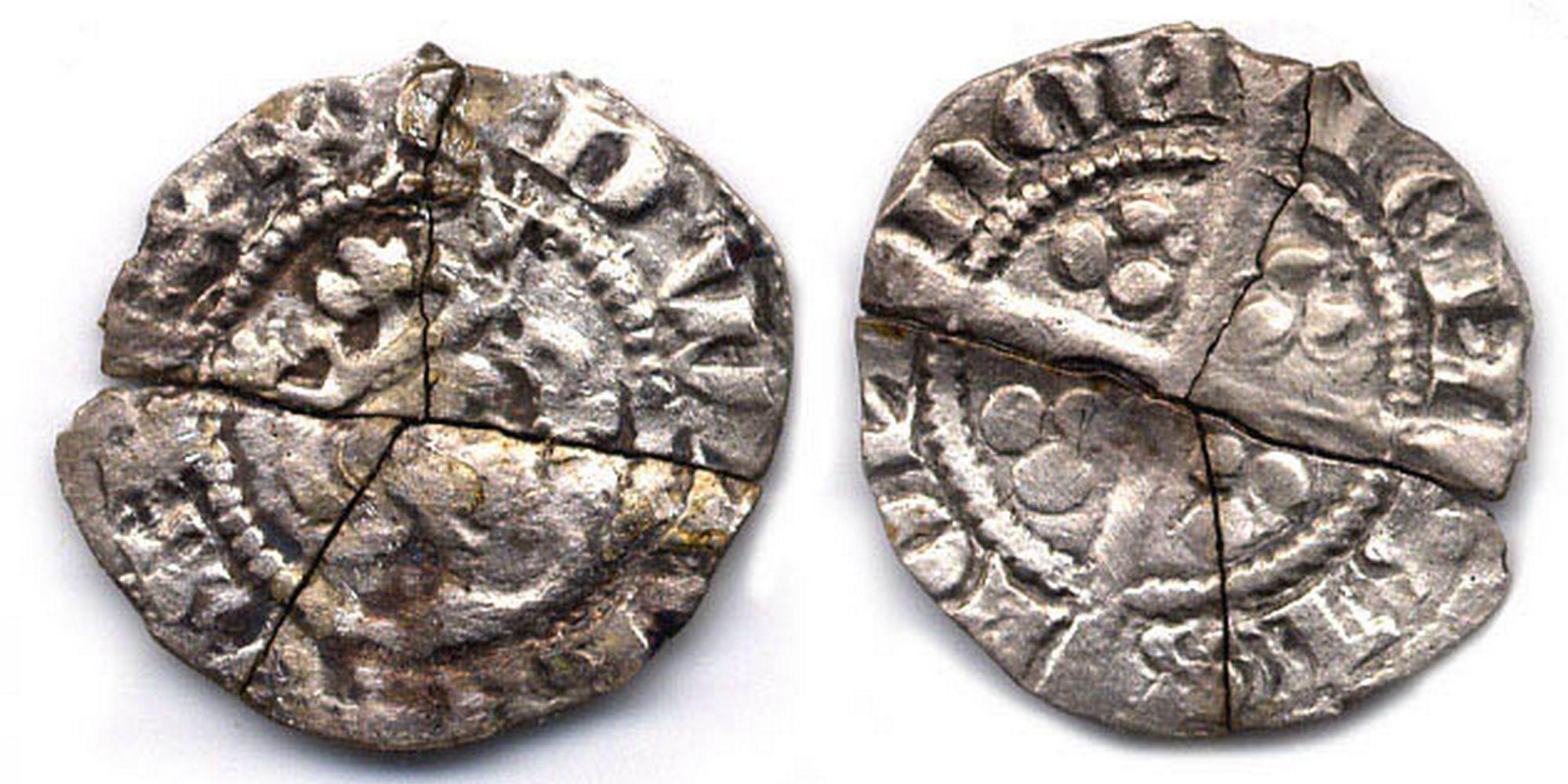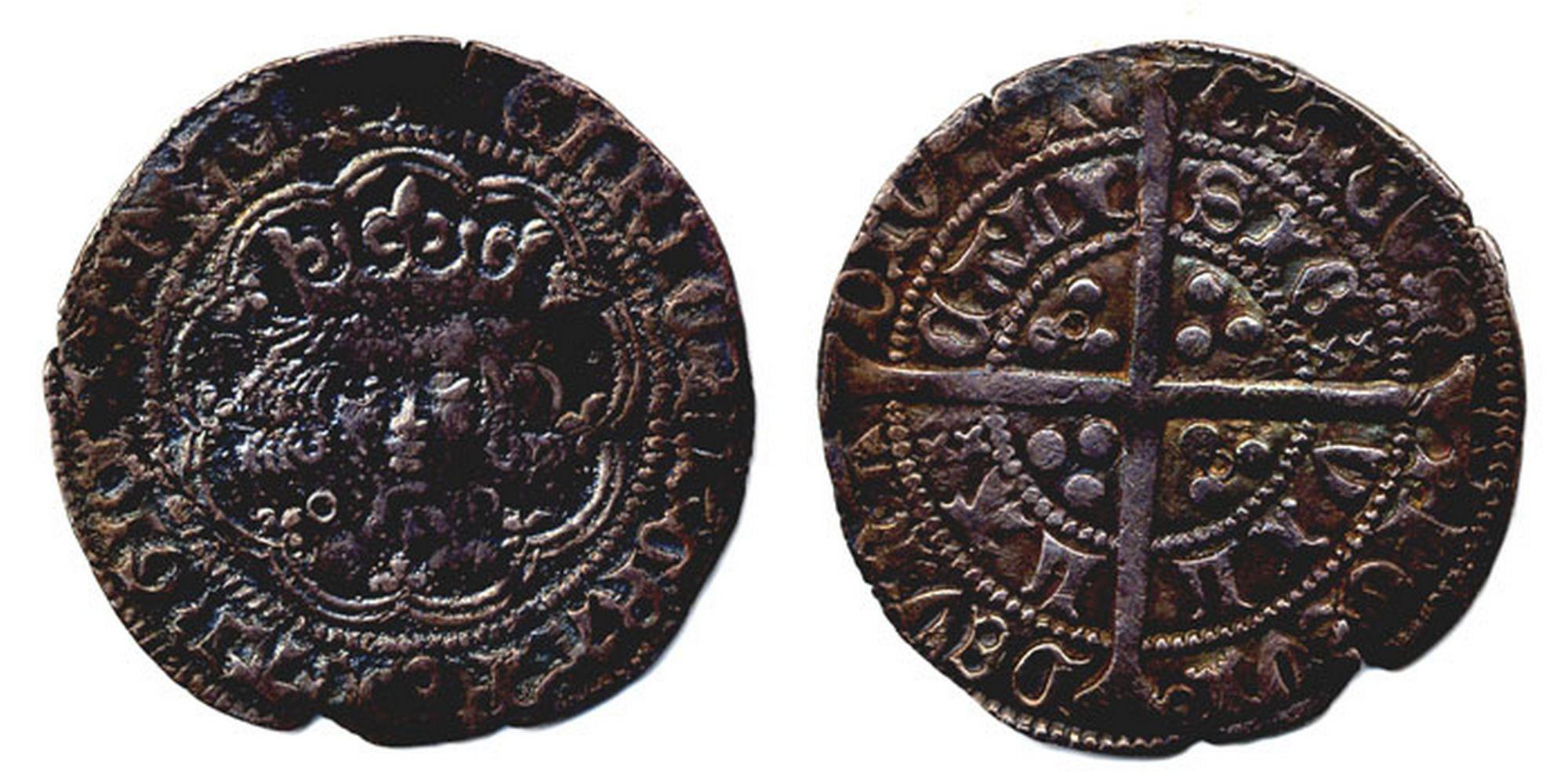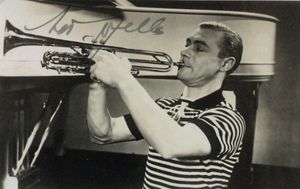Hampshire Cultural Trust cares for over 30,000 coins which date from the Iron Age to the present day. They reflect centuries of commerce and monarchy and capture the likenesses of hundreds of different rulers. If you were to examine these coins in person, or even look through our collections website, you might notice that there are some striking similarities between a number of our medieval coins.
With their bouncing curls, large crowns and sharp, calculating gazes, you might even think for a moment that the coins depict the same person—and in a way, they do. The question this article will explore is: why do these coins look so similar?
The answer lies, in part, with a coin from the reign of Henry III. The king who gave Winchester its Great Hall was also responsible for one of the many features which these subsequent coins under discussion have in common: the long cross.

The long cross had been used intermittently on early medieval coins, but in 1247 Henry III brought it in as a permanent feature on English coins. The long cross standardised the size of the coins. Prior to this, there was considerable confusion about the exact size coins were supposed to be and it allowed opportunists to 'clip' the coins. This meant that metal from coins was harvested, melted down and sold on, while the coin retained its original value. Henry III’s coinage reforms helped put an end to this fraudulent practice.
If you compare Henry III’s coin to that of his son, Edward I, then we can see where the inspiration for Edward’s own coin reforms may have come from. Edward altered the way the king’s likeness was presented on coins and it is him who we have to thank for the bouncy curls and clean-shaven jaw. Edward also introduced different denominations of coins, which helped to buoy the English economy, and he reduced the number of mints around the country. This last policy resulted in the closure of the Winchester mint, which had been operating for four hundred years.

The fact that the likeness remained more or less the same for two centuries is extraordinary, especially considering that this was an intensely tumultuous period in English history. From 1327 to 1485, English monarchs were deposed on seven different occasions and the kingdom repeatedly broke down into civil war as different factions vied for political power and, ultimately, the throne itself. The backdrop to all of this was the Hundred Years War, which emptied the English treasury and, in the end, left the kingdom very little to show for a century of intermittent and bloody warfare.


Despite all of this change, the Edwardian likeness endured. In many ways, it was the only consistent thing about the monarchy in this period—and in that, perhaps, we find the answer to our question, although we can never be absolutely certain. Coins were, and remain to this day, everyday propaganda. They help a monarch emphasise their power and similarities between coins across different reigns helped to show that there was continuity between monarchs. This was especially important given the amount of change that was occurring in this period.


Moreover, it suggested that these rulers were part of an unbroken chain of monarchy (despite it clearly being broken many times over), and it emphasised their dynastic links to Edward I and the Plantagenets. This would have been advantageous in the case of Henry VII, whose claim to the throne was widely questioned. By maintaining this image of kingship on his coinage, he could emphasise his place within the royal story and show that not only was he the rightful king—he was also part of this monarchic continuity from Henry III and Edward I onwards.


Therefore, perhaps what we see is not so much the likeness of the kings who are ruling, but a likeness of what kingship ought to be, and was expected to be by all parts of society during the medieval period. What these rulers are projecting to us is essentially the same person, the same ideal, in order to demonstrate that they are that ideal monarch - even when they are not.
If you have enjoyed Culture on Call and you are able to make a donation, please click the link below. Any support you can give will help us keep communities connected to culture in these difficult times.





